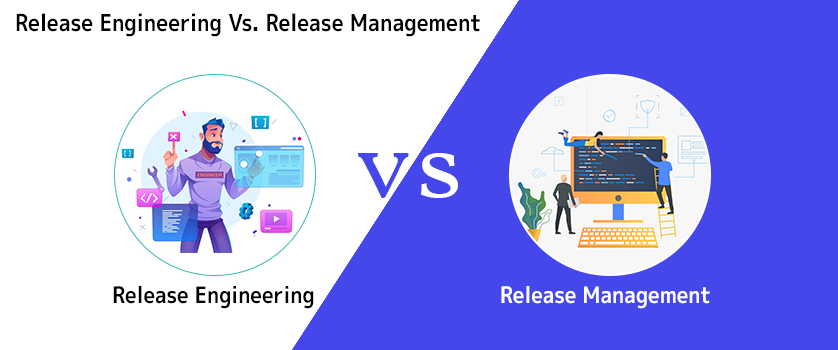


DevOps, with its collaborative and agile approach, has paved the way for quality, rapid, and consistent software development and release. Today, organizations are rapidly embracing DevOps because of the numerous benefits it offers to remain competitive, maintain reliable CI/CD pipelines, continuously improve operational efficiency, and deliver value faster.
The impact of DevOps is just not limited to development and delivery but spans release engineering and release management, the two critical phases of the software development life cycle (SDLC).
Release Engineering and Release management are two phases in DevOps-based software development that are often confused with one another. Though the two seem similar, release engineering and release management have different functions and implementation processes.
This article defines the differences between Release Engineering and Release Management to help get a comprehensive understanding of the two.
A new and fastly-growing approach to software engineering, Release Engineering is responsible for the compilation, assembly, and delivery of source code into finished products or other software components. Associated with Software Release Life Cycle, Release Engineering's objective is to improve the software build and release pipeline to ensure rapid and consistent software deployment.
Release engineers leverage their extensive understanding of source code management, compilers, build configuration languages, automated build tools, package managers, and installers to ensure the development and release of quality software at a reliable and predictable rate.
Moreover, release engineering is concerned with various aspects of software productions, such as:
In DevOps, Release Engineering plays an extremely critical role. It accelerates the path from development to operations and acts as the integration hub between the two. Implemented by organizations like Google and Facebook, release engineering involves building fast and reliable pipelines to transform source code into viable products.
Apart from ensuring smooth collaboration between development and operations teams, it also involves software configuration management, builds, deployment, and environment management. DevOps approaches like Continuous Integration, Continuous Deployment, and Continuous Delivery are all modern release engineering practices, where all the steps in the release engineering process are automated. It helps increase the release velocity of individual changes and also ensures a sufficient level of release confidence.
It is the responsibility of release engineers to work with software engineers in product development and SREs to define all the steps required to release software. Moreover, they automate processes and track changes in a configuration management system or revision control system.
Some of the critical practices that can help you ensure the accuracy and reliability of release engineering processes are:
A core practice of software development for decades, Release Management is the process of planning, building, testing, preparing, and deploying new code and services to production environments while ensuring alignment with business priorities. It ensures the delivery of new and enhanced services by organizations while protecting the integrity of existing services. With the help of release management, organizations can increase the number of successful releases by preventing unexpected outcomes.
Moreover, release management deals more with the non-technical aspects of the whole release process like release process, tracking release workflow, release coordination, and taking the release to the production.
The main objective of Release Management is:
In DevOps, the focus of release management is on planning, scheduling, and controlling the software development and delivery process. However, unlike traditional software development, here, both developers and IT operations collaborate from the beginning of the process to the end, ensuring fewer, shorter feedback loops and faster releases.
This collaboration and shared accountability for the services delivered, enables teams to detect and resolve incidents and issues faster, both during and after the release of the product/features.
Furthermore, release management helps create a continuous flow to the production that DevOps strives for and aligns work within the team and across the organization.
To ensure successful implementation of Release Management, teams must follow some critical practices like:
Though different in their objectives and practices, Release Engineering and Release Management are two significant concepts of DevOps, responsible for the success of a software project. These two practices provide multiple benefits to software companies and effectively transform the way release engineers work and collaborate with the development and operations team.
In short, both Release Engineering and Release Management are two critical practices responsible for the successful delivery of a reliable software product.